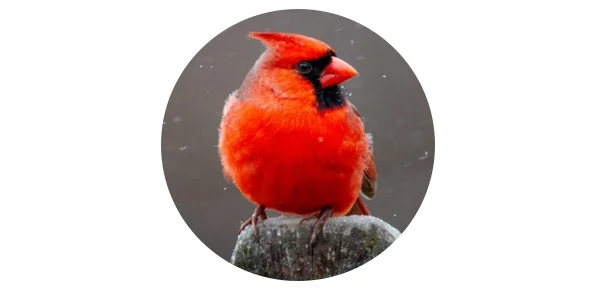How to Attract Blue Jays? 07 Tips & 4 Things to Avoid
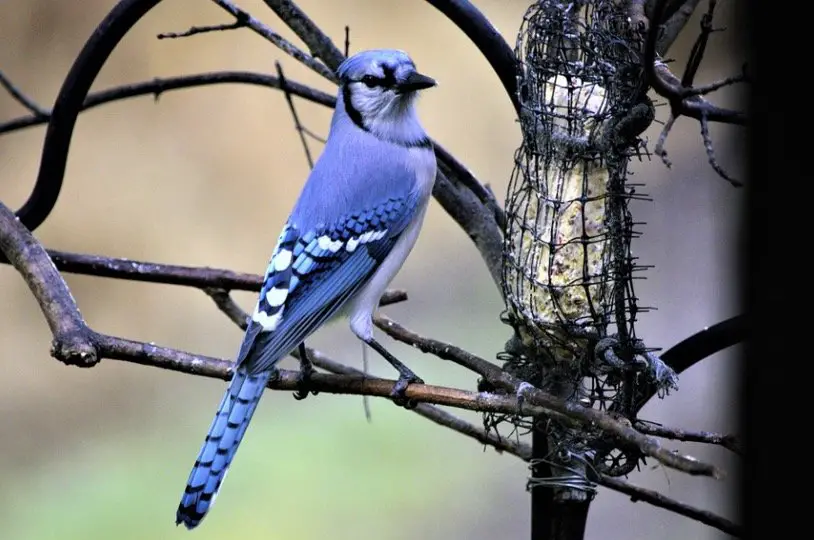
Blue Jays are considered the bullies of the bird kingdom and birdwatchers insisting observing the Blue Jays into their backyards. The birds are extremely beautiful, entertaining, intelligent thus bird watchers try to attract them to the garden.
The birds belong to the family Corvidae and the birds have excellent problem-solving skills, which they use for collecting and gathering food. The birds chase away their predators when they try to steal their food. The birds taunt cats and mimic hawks to chase them away.
The birds have beautiful plumage of various colors including blue, green, brown, white, and black colors. The sound of blue jays is very fascinating and looks interesting to listen to. You need to accomplish their needs to keep the birds around all the year. At first, the birds hesitate but later they are easily attracted to the yard. The birds have very good memory thus if you provide them food they will return to your yard.
How to attract blue jays to your yard?
i. Oak Trees
Habitat is a crucial need of most of the birds including blue jays. If you are trying to attract these birds, you need to provide suitable habitat for the birds. Blue jays are forest birds thus providing large trees for shelter and a nesting site is the best option for attracting them.
The birds feed on acorns and beechnuts thus oak and beech trees are suitable for them. If you have these trees in your yard, the birds will attract because insects also live in the trees and blue jays feed on them. They also get shelter and nesting sites in large trees.
ii. Peanuts
Always fill the feeders full and provide plenty of food to the birds. Blue jays love peanuts, so the supply of peanuts in the feeders should be enough. Blue jays will most likely leave the yard and search for another stable food source if they do not find plenty of food in your feeder of the supply dwindles. The opening of the feeder should be too small such as in the tube feeders if are trying to attract other smaller birds in your yard.
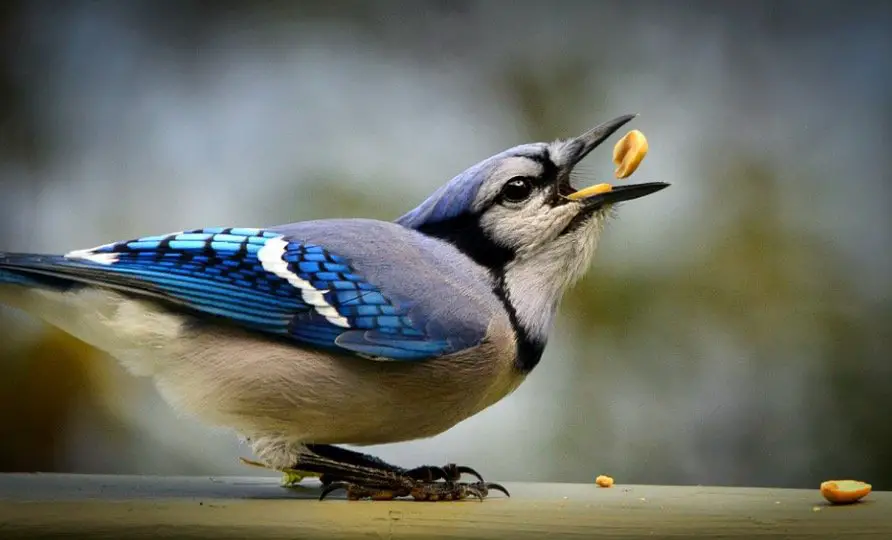
iii. Nesting Material
The mating season of blue jays starts from March to July. The birds form monogamous mating pairs and build their nests during the mating season. To create a nest, they gather nesting materials such as grass sticks, etc. during these months, provide nesting materials to the birds to help them.
You can offer sticks, grass clippings, and twigs near their site for nesting. Generally, jays do not prefer birdhouses and build their nest in trees. The nesting platforms of blue jays are quite large, which are larger than 8 inches square.
iv. Foliage
Make sure that enough deciduous trees such as beech, oak, pine, and other conifers should be available in the yard to provide a secure resting site to the birds. Blue jays also get a natural source of nuts from these trees.
The leaves of these trees are used to forage by the birds and also to hide their food while storing it during winters. Blue jays feel safe in thickets and landscapes with trees, however, they prefer oak woodlands and require a stable food and water source around their nesting site.
v. Water Bath
If you are trying to attract blue jays, offer them a water bath that should be wider in the middle and deep where the birds can move around and visit with their family. You can also install a fountain or a birdbath with mister because blue jays attract towards dripping or splashing water and it also increases their curiosity. During the winter months, add hot water to the birdbath.
To attract birds, you can also offer a running water source because they have good vision and also great hearing that helps them in finding the water source. You can add a solar-powered fountain pump to the water bath that helps in making a moving water bath and also it is sustainable. However, during the winter months take a pump inside and be warned.
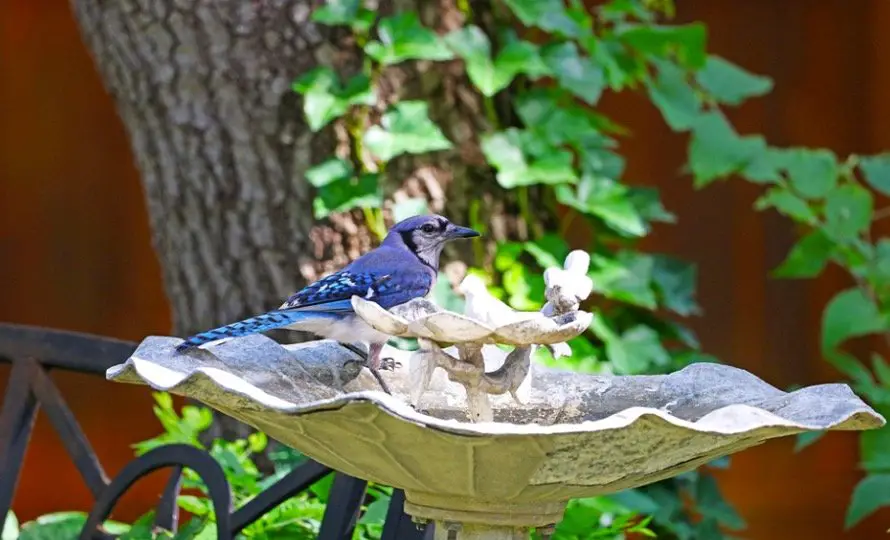
vi. Insects
Blue jays are considered natural pest control because they eat insects and most of their diet is made of various insects. If you are trying to attract blue jays in your yard, you should not use any pesticide spray in your garden. Let the birds feed on caterpillars and grasshoppers from your yard to attract blue jays.
vii. Perches
Providing flat space to the birds is very useful to offer them a suitable perching site such as trees branches or window sills. The platform should be large enough of at least 8x 8 inches and should be in the height such as on a pole or in a tree. Protect the bird feeder from raccoons and squirrels. You can use baffles and other things to prevent raccoons and squirrels from reaching the feeder.
viii. Hiding Spots
Blue jays store extra food in their homes by hiding it. They take the food in their mouths and then hide it for later. Therefore blue jays prefer shady places to hide the food easily and also protect food from getting hot in the sun.
The nesting platform should be provided in a shady area where predators including squirrels and raccoons could not reach them. Always clean the feeder and perching area. To avoid parasites and diseases regularly remove branches and leftover food including nuts and eggshells from the feeder.
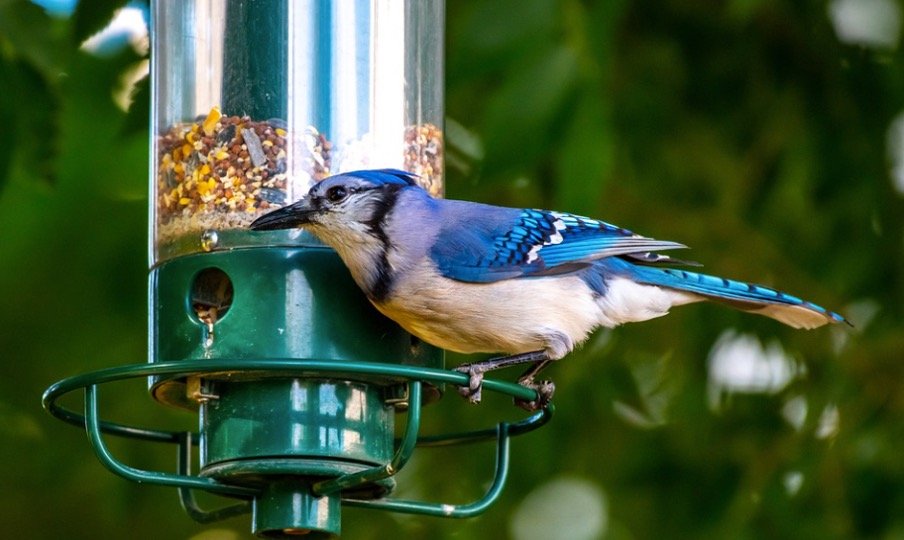
3 Things to Avoid
Adding appealing elements to your yard isn’t the only thing you can do to attract blue jays to your yard. There are also a few things you can avoid to make your property safer, ensuring many return visits by your blue jays friends.
i. Don’t fill your garden with artificial trees
Artificial trees do little to help attract birds to your backyard. By creating an environment that’s naturally attractive to wildlife, you’ll encourage more species of birds (and other wildlife) to visit. The most effective way to do that is by filling your garden with shrubs and small trees—ones that will give birds places to hide and nest in.
Additionally, plant native plants and flowers in different parts of your yard; these will appeal to specific species of local birds. As a result, you’ll get a greater variety of species visiting your property over time without much extra effort.
ii. Don’t use pesticides
While we’re certainly not saying that every backyard birder is also an organic gardener, there’s no doubt that pesticides can kill and harm birds. That’s why it’s important to always read your pesticide labels before using them in your garden. Keep in mind that some chemicals are more toxic than others, so do some research and choose only products with a low toxicity rating.
iii. Don’t let feeders get empty
Birds eat all day, but they tend to snack throughout their day. The key is to keep your feeders full at all times so birds are encouraged to stop by and eat every chance they get. If a bird lands on an empty feeder and you see him or her pecking around, it’s likely they’re hungry enough that you’ll never get them back again. So fill up your feeders! Start with a general seed mix and offer additional treats of fruit or peanut butter later in the day.
iv. Don’t let birdbath dirty
Especially in winter, birds need a constant source of water. The cleanliness of your birdbath is more important than you might think. A dirty birdbath can harbor salmonella, E. coli and other bacteria, leading to serious health problems in pet cats and dogs who drink from it (not to mention their owners). A sturdy brush should be kept nearby for regular scrubbing. Another option is to keep a small bottle of bleach nearby; once a week or so, give your birdbath an all-over spray with diluted bleach and water.
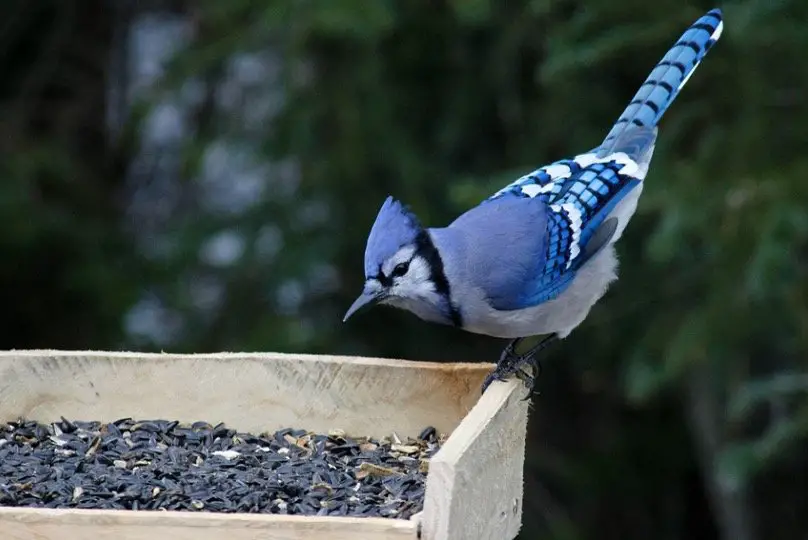
FAQ About Blue Jays
What are Blue Jays?
Blue Jays, also known as Cyanocitta cristata, are members of the crow family, Corvidae. They are named after the blue coloration of their crest and back feathers. Blue Jays can be found throughout North America, except in some northern areas during winter months.
They are common birds with a raucous call and are difficult to miss once they become familiar with your yard or neighborhood. Their distinctive call has been likened to that of someone shouting Hey! in an indiscernible language or Jay! Jay!
What is best time to attract Blue Jays?
Blue jays are intelligent and social birds. They are fun to watch, so many bird lovers want them around. You can bring these beautiful birds into your yard by putting out bird feeders and scaring away natural predators.
The best time of year to attract blue jays is late winter or early spring when food is scarce. It will also help if you have a few trees in your yard where blue jays love to roost. If you don’t have any trees in your yard, consider putting up some new ones that will grow quickly enough for shade next summer!
Where can Blue Jays be found in the USA?
The birds can be seen all over the United States. The birds are non-migratory and live in their area all year round whereas most birds move towards the south to warmer climates during colder months. Water, food, shelter, and nesting sites are essential needs of blue Jays.
Are there different species of Blue Jays in the USA?
Blue jays are the most common members of the jay family that live in the eastern states of the USA. In the western states and southern Florida, several varieties of blue jays live. Some common species are scrub-jay, green jay, and steller’s jay.
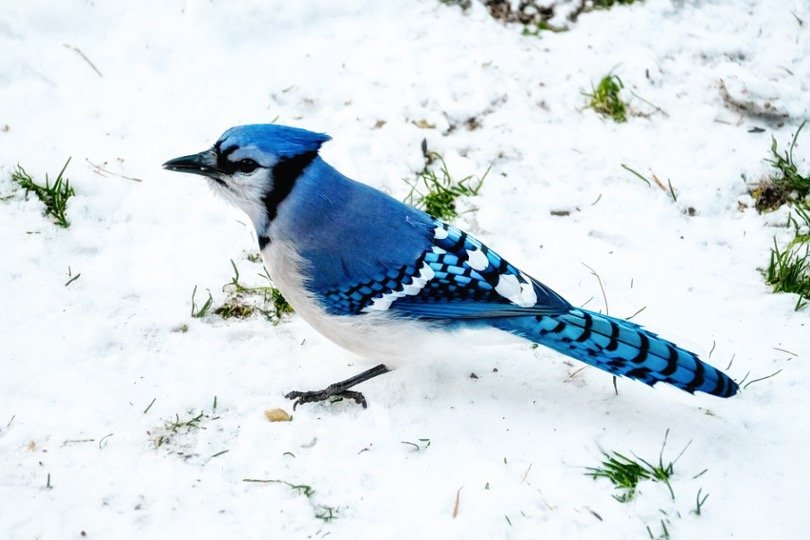
What do Blue Jays eat in the Wild?
Blue Jays feed on various types of food materials including invertebrates, acorns, fruits, nuts, seeds, and even eggs and nestlings sometimes. You can easily attract them by offering their favorite foods such as peanuts, seeds, corns, and sunflower seeds. You should use large feeders and install them near trees. Offering them a stable source of fresh and clean water will help you to attract birds.
How do Blue Jays survive winter?
During colder months, blue jays produce 25 to 30 percent more feathers to protect themselves from cold. They also use body oils to waterproof their feathers that serve them insulation and also fluff their plumage to protect them from cold.
Blue jays undergo hypothermia during colder months in which they put their body in the state by slowing their heartbeat and dropping body temperature to conserve energy. Thus, they survive in extreme cold, and to keep themselves warm they huddle together.
Do Blue Jays obsessed with shiny objects?
It’s true, blue jays do indeed have a thing for stealing shiny objects, but not always for nefarious purposes. Bright pieces of jewelry and silverware make great additions to their high-rise nests. In fact, you can take it a step further: Glittery markers, sequins, glue or even mini flashlights are just some of fun things that will surely catch a blue jay’s eye (and keep it busy making you a special masterpiece).
Just make sure if you’re picking anything up at yard sales or thrift stores that it doesn’t contain lead; an accumulation of small amounts can be harmful to wildlife (and small children). And don’t worry about taking things away from our feathered friends: The huge nests they create are made primarily of twigs.
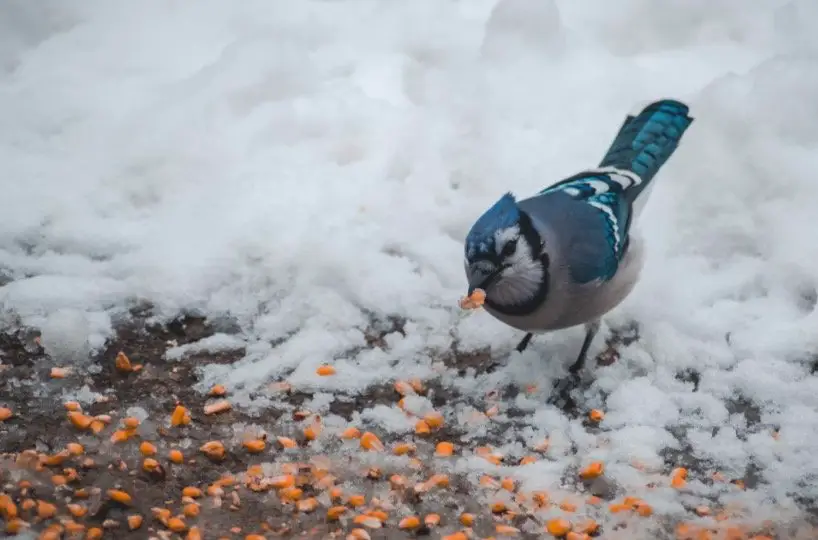
How to keep Blue Jays nest secure?
Female blue jay may build a second nest with a new male and lay eggs in it, leaving eggs from her first clutch with her mate. She will continue to incubate those first eggs, which makes them vulnerable. You can help provide protection by putting up netting over or around your blue jay’s nest area and being sure to keep pets away from it.
Netting will discourage other animals from attacking your blue jays. In general, predators such as hawks and raccoons are one of their biggest threats. Helping them secure their nests is an easy way you can help preserve their habitat in your yard.
Will Blue Jays lose a nest after the baby bird hatches?
Nope! In fact, many people assume a baby bird left in its nest means that it’s abandoned, but that’s not true. In many cases, mommy bird simply leaves her little one unattended while she goes out to find food. It takes quite a bit of energy and resources for mommy birds to raise their young—particularly if they lay more than one egg—so it makes sense that she’d fly off every once in a while to gather up supplies.
Do Blue Jays migrate in wintertime?
A lot of people wonder about where blue jays go during winter. The answer depends on two things: how far north you live and how cold it gets. Like most birds, blue jays do not migrate – they stay put no matter what temperature or season it is outside. However, as most of us know from experience, that doesn’t mean they are active all winter long.
There are several factors that determine whether a bird will be active or not – food supply being one of them. So if you want a well-fed blue jay in your yard, here’s what you can do: put up a good amount of feeders so that seeds won’t run out. This will keep those feathered friends around longer into wintertime!
Can I keep Blue Jays feeder out all year round?
While blue jays will eat throughout all seasons, you may want to take it down during cold months. In winter, make sure you have plenty of food on hand in case a cold snap hits and stores become scarce. Also keep in mind that if you do put up a feeder during snowy months, you’ll need to clear any snow around it regularly so that birds can still land easily and eat.
In spring, as natural foods come back into season (like tree buds), remove your feeder—you don’t want hungry birds eating up all of their food before other sources become available. Plus, keeping a feeder up once summer starts is one way to keep those pesky squirrels away from berries!
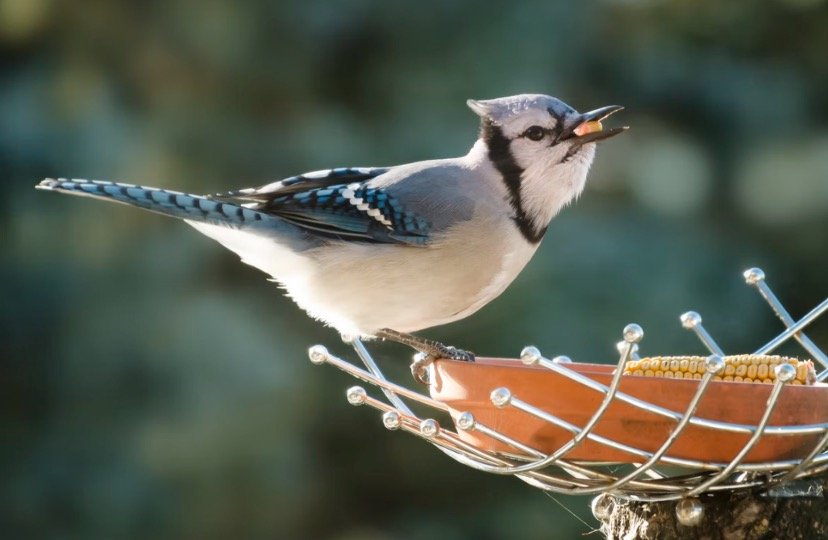
What do Blue Jays eat from bird feeders?
Most of the diet of blue jays is made of vegetables, insects, nuts, and plants. Blue jays like sunflower seeds, dogwood, acorns, suet, and peanuts. You can use a spring or mesh feeder to offer them food, even large trays or platform feeders are also suitable. Use a pole to mount the feeder or you can also choose a ground feeder, which is more perfect because the birds are heavy are feel easy in-ground feeders.
The length of a blue jay ranges from 9 to 12 inches and its weight varies from 2 to 3 oz. Blue Jays prefer tray feeders, platform feeders, hopper feeders, and peanut feeders for feeding. However, blue jays do not prefer swing feeders but you can attract them with peanut wreaths. A pine cone covered with peanut butter and birdseed is also used for this purpose.
The bird food should be a mix of insects, fruits, nuts, and grains. Sunflower seeds and peanuts are the favorites of blue jays. Always fill the feeder to attract birds because they will leave the yard if the food supply dwindles. Don’t offer them spicy nuts and choose unsalted, roasted nuts for filling their feeder.
Blue jays also like suet, mealworms, cracked corns, and sunflower seeds with mixed fruits including grapes, elderberries, cherries, and berries. You can also offer them peanuts and prefer a platform feeder over a ground feeder because they like these feeders. The feeder should be cleaned regularly and fill the feeder with only one days’ worth of food.
Can Blue Jays be tamed?
Taming blue jays in quite easy. If you want to tame a jay, raise it from a fledgling however according to the laws in the US it is illegal to domesticate a blue jay due to the migratory bird’s act. However, you can get a license to keep a jay as a pet then you can keep it.
Can Blue Jays talk?
It is claimed that blue jays mimic humans. They can learn human speech and they also use a wide variety of sounds. However, blue jays cannot speak like a parrot but still, they learn human speech patterns and also mimic the pitch and tones of human speech.
Why do Blue Jays mimic hawks?
Blue jays use hawk’s sounds to keep away the predators by scaring them away. They produce the sound of hawks so that other birds think that hawk is in the area and in this way, they scare off their predators. It is also suggested that they only imitate sounds they heard including hawk calls and there is not any other motive behind mimicking hawks.
